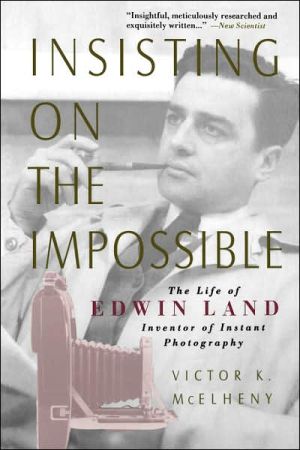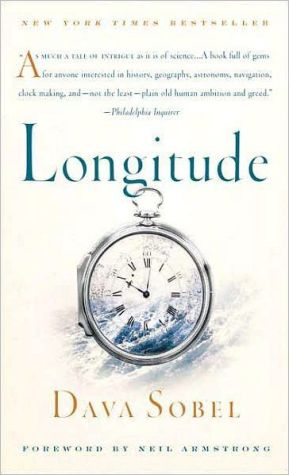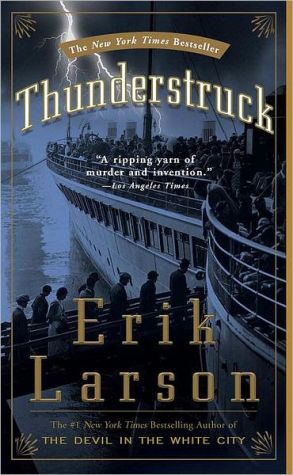Insisting on the Impossible: The Life of Edwin Land
If a single life exemplifies the inner drive that fires a great inventor, it is the life of Edwin Land. The major innovations that he was able to achieve in photography, optics, industry, and science policy carry priceless lessons for readers today.Insisting on the Impossible is the first full-scale biography of this Magellan of modern technology. Victor McElheny reveals the startling scope and dating spirit of Land’s scientific and entrepreneurial genius. Second only to Edison in the number...
Search in google:
In this masterful biography of the Magellan of modern technology, Victor McElheny portrays a great inventor and entrepreneur in action. Second only to Edison in the number of patents he received (535), Land not only invented instant photography but he built a gigantic enterprise that turned out polarizers, high-speed and x-ray film, identification systems, 3D and instant movies, and military devices for aerial reconnaissance. He developed a new theory of color vision and, during the Cold War, spearheaded the development of the U2 spy plane. McElheny’s insights into Land’s innovative genius will speak to anyone interested in business, science, photography, or government. Technology Review An excellent book [full of] thoroughness and passion.
Preface to the Sloan Technology SeriesXIChronologyXIIIOverture1Part I An Inventor Is Born 1 Noontime5 2 Self-Taught Boyhood13 3 "First Happiest Moment": Polarizer24 4 Start-up48 5 Going Public69Part II Detroit and Hollywood 6 Headlight Glare86 7 Three Dimensions108Part III World War II 8 "The Best Damn Goggles in the World"126 9 "Who Can Object to Such Monopolies?"140Part IV New Photography, New Science 10 Sepia in a Minute161 11 "A Whole New Industry"189 12 Black-and-White: Meroe Morse203 13 Instant Color: Howard Rogers220 14 Color Vision245Part V Secret Statesman: Cold War 15 U-2 Spy Plane278 16 The Shock of Sputnik306 17 Spy Satellites322Part VI Grand Scale: SX-70 18 Demonstrating a "New Medium"341 19 Collaborators356 20 Selling SX-70376Part VII Exit from Polaroid 21 Crisis392 22 Instant Movies409 23 Too Late425Part VIII Evening 24 Polaroid v. Kodak441 25 Prospero's Island455Abbreviations468Sources469Notes475Acknowledgments503Index505
\ Technology ReviewAn excellent book [full of] thoroughness and passion.\ \ \ \ \ New ScientistInsightful, meticulously researched and exquisitely written.\ \ \ BooknewsThis biography chronicles the life and work of scientific and entrepreneurial genius Land (1909-1991), who held 535 patents. He built a modest enterprise into an "invention factory" that turned out not only polarizers and the first instant cameras, but also high-speed and X-ray film identification systems, 3-D and instant movies, and military devices for night vision and aerial reconnaissance.\ \ \ \ \ The New ScientistInsightful, meticulously researched and exquisitely written.\ \ \ \ \ Nancy MaullMcElheny...pays careful attention to Land's descriptions of his own methods of technological success....The biography [he] constructs...is both detailed and overfull, painstaking and underanalyzed....Land left...no diaries or memoir and few letters....The...consequence is an elaborate account of Land's achievements... -- The New York Times Book Review\ \ \ \ \ Kirkus ReviewsThe life of Edwin Land could easily spring from one of Horatio Alger's stories. Son of a scrap-metal dealer, Land dropped out of Harvard to pursue the inventing bug and his dream of creating a cheap plastic sheet polarizer. He wanted to decrease auto accidents caused by headlight glare, but it was with sunglasses and photography that the polarizer and the newly founded Polaroid corporation found success. An inveterate innovator and conceptualizer, Land would eventually receive more patents than any other American, excepting Edison. His genius was both for the sudden inspiration and the organizational ability to get people behind him to fill in the details. For example, the idea for instant photography came to him in the space of an afternoon, but it would take many years and many talented individuals to work out all the details. He also developed a new theory of color vision, worked as a science advisor for President Eisenhower, and helped design NASA. He drove Polaroid relentlessly to create new refinements and inventions such as color film and the SX-70 camera. He was motivated by the belief that "the bottom line's in heaven. The real business of business is building things." His magic touch held right until the end when he developed instant color movie film just as video recorders were coming on the market. The costs to Polaroid were enormous and led to a gradual severing of ties between Land and his company. \ Former New York Times science reporter McElheny has done a formidable research job, but he can't seem to decide whether this is a popular account or one for specialists. There are long descriptions of technology and processes that are almost unintelligible to thelayperson. The organization throughout is also appalling, with frequent, inexplicable shifts back and forth in time. Finally, McElheny's Land seems like a guest in his own biography, as ghostly and indistinct as the image on a negative.\ \ \








